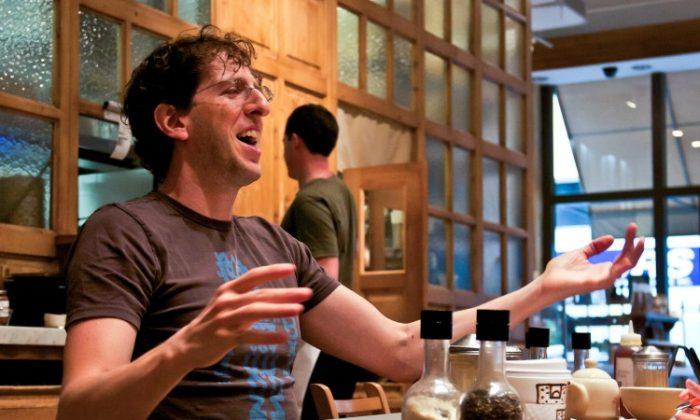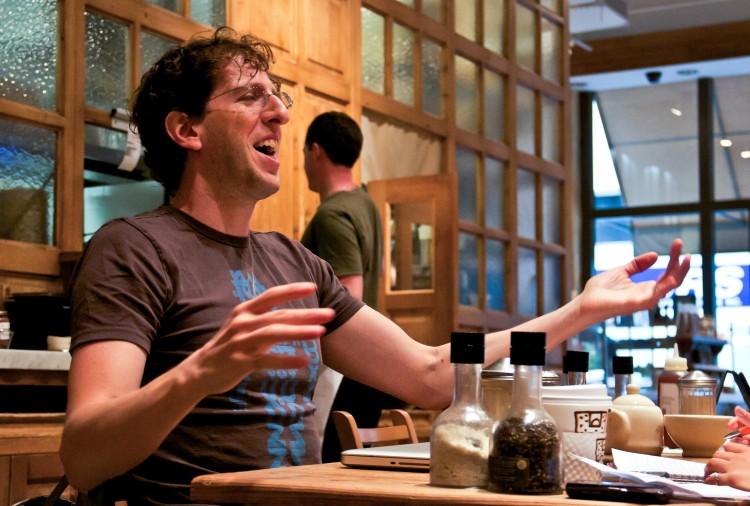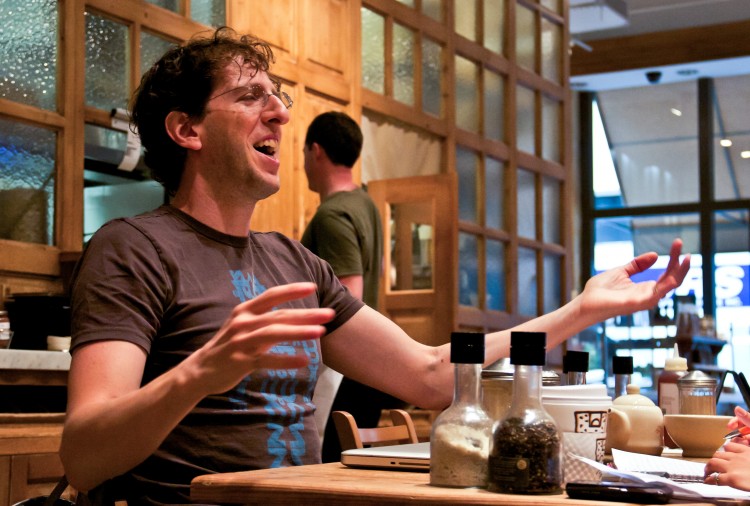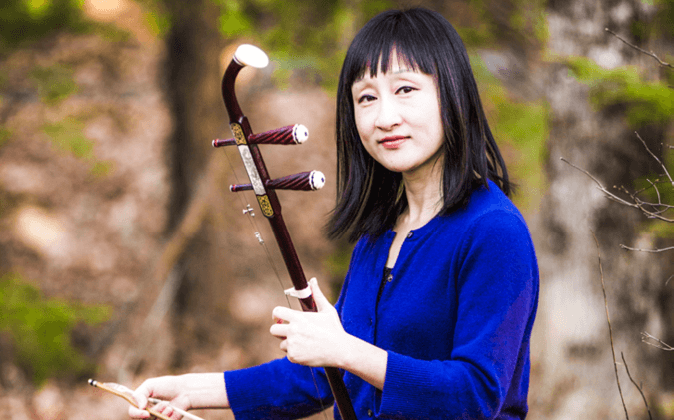NEW YORK—In recent animated movies such as “Tangled” and “Brave,” movements such as how a character’s dress creases as she walks, swirls as she dances, and shimmers as the wind blows, are becoming increasingly similar to the movement of clothes on real, live humans. One of the masterminds behind this effect is a computer science professor from Columbia University.
Eitan Grinspun, 37, is the director of the Columbia Computer Graphics Group research lab. The technologies he has helped found allows computers to recreate and predict realistic movements.
Although his technology made its first appearance in “Tangled,” Disney began contacting him in 2003, when Grinspun was still working on his postdoctorate.
“I thought it was strange. I’ve been working on simulation of airbags, crushing cans, and I didn’t know what I could offer,” he said. “But I’ve always been very open to things.”
Grinspun is indeed very open to new ideas. He is someone who baked fish brownies as a kid.
Besides his work on lifelike Disney movies, his technology also helped develop Adobe’s latest paintbrush that imitates the individual bristles of real brushes.
He has also contributed to breakthroughs in the medical field.
Prior to the invention of the beveled needle, doctors used a straight one, without knowing whether the needle’s direction would poke internal organs when they performed a biopsy. Researchers developed a beveled needle that allowed doctors to control its direction with a precise twist of the wrist.
But doctors needed to be trained to use the needle. This is where one of the technologies that Grinspun helped develop comes in. The doctors were trained through an electronic program that can predict how the beveled needle turns. The program was inspired from one of Grinspun’s articles.
Despite having companies from a broad range of sectors looking to incorporate his technology, Grinspun’s idea was dubbed as nonsensical in its early years.
“So when I had my own students [at Columbia], I said ‘Let’s work on this,’” Grinspun said. “We had no idea what we were doing but at least it was us doing it, and there was no need to be justified by someone else.”
When Grinspun was still in graduate school, he worked with Peter Schröder, a computer science professor at the California Institute of Technology, for Schröder’s postdoctoral. Schröder approached him a few months before his deadline and said he needed to make a coke can crush on a computer screen.
“I thought I had nothing to lose, and I get excited by deadlines and challenges,” Grinspun said. “It was super stressful. The paper was rejected; we had a blast.”
Grinspun continued to work for Schröder over the next four years. He liked the types of projects they were doing. They were entering risky, unknown territory that many of their peers and overseers did not approve of.
Slowly, but surely, things began to click. “It took me three to four years just to realize that everything I learned in engineering, physics, and math was relevant to what I was doing,” Grinspun said. “Oh, so that’s why these physical laws were important when I learned and ignored them back in the day.”
“It took me 10 years to rehash everything I learned in physics and math and apply it to the artistic side,” he said.
Early Childhood
Grinspun is a Chilean who lived the first eight years of his life in Kfar Sava, Israel, “the city of grandfathers.”
His family spoke Spanish at home. “It was a cultural shock when I began preschool,” he said. Halfway through elementary school, the Grinspun family moved to Canada.
“These events defined me. Whenever I go to a new place, I just immerse quickly,” he said. “I am extroverted in that way because I had to [move around] so much.”
Computer Science Prodigy
Grinspun has been interested in computer graphics since elementary school. When he was 11, he noticed his aunt had a fondness for Tetris.
“So I just sat there for an afternoon and programmed up a game of Tetris,” he said casually. “But I was so into it that I forgot to hit ’save.' So she played it, she liked it, but when we turned off the computer it was gone.”
“It was a very Buddhist, transient-like game,” he joked.
Grinspun went to the Vaughan Secondary School in Ontario, Canada. When he was not writing video games scripts, he would create other things, such as candy vending machines comprised of cardboard, tubes, and rubber bands.
Although Grinspun is probably a certified genius, he is humble. “I can parallel program a computer but I cannot parallel think,” he joked, as he struggled to continue speaking while pulling up his program on the computer.
“I laugh at myself all the time. Money and fame means nothing. I don’t take this stuff seriously,” he said. “Life is too short. If you take things seriously, what does that get you?”
At the end of the day, the most important thing for Grinspun are not high I.Qs, or deep pockets, but human relationships.
When Grinspun was attending the California Institute of Technology for grad school, he nearly changed his major to psychology because he could not communicate with an adviser.
“I was frustrated at the time because he only cared about the hours I spent in a lab, but never talked to me about the research,” he said. “When I hire people now, it’s not just about their technical abilities, but also about will this person click with our cohesive group that’s kind of like a family.”
Next...Art + Science=Magic
Art + Science=Magic
Grinspun was fascinated with magic as a child. He was the geek; his brother was the jock. Grinspun performed magic tricks for his neighbors’ children; his brother collected the admission fees.
“The whole aspect of illusion, the visual aspect of it, a lot of that happens when you do visual effects for movies,” he said. “There is a magical aspect to it.”
Grinspun said his work is about combining science with the arts. Although he is a computer science professor at Columbia now, his first love was the arts.
Grinspun played piano. He was the Tin Man in his school’s “Wizard of Oz” production. He still bursts out into song every time he goes for a walk.
“The artistic side is [still] innately in me even though I don’t actually take the time to practice it,” he said. “I would love to take two hours a week to do pottery, or to draw, or play piano, but I don’t have the time.”
Heroes
Grinspun’s father is a social economics professor. His mother started off as a night shift nurse, and is currently the CEO of the Registered Nurses Association of Ontario, a leading public health advocacy group in Canada.
Despite having a sound career, she still decided to pursue a “Ph.D. on caring,” said Grinspun.
While continuing her full time CEO work, she returned to being a night shift nurse on the side to study and analyze: what does it mean to care? She began her Ph.D. studies the same time as Grinspun, and finished just last year.
From his mother, Grinspun learned that power and status don’t mean anything in this world if there is no empathy or compassion.
When asked who he would choose if he could have lunch with any historical figure, Grinspun looked shocked for a moment. “I don’t have an answer to that,” he said.
He put his fingers on his temples, and became lost in thought.
“Just one? It’s so hard to pick just one,” he said.
After a minute of silence, a childlike grin spread across his face. “Emily Noether,” he said.
Noether (1882–1935) explained how formulas are used to express conservation laws; she is one of the most influential people in the mathematical world, and a woman. “That is double cool,” Grinspun said.
He couldn’t pick just one. The other person he would want to meet is Sophie Germain (1776–1831), the mother of the modern elasticity theory. She won a kilogram of gold from the Paris Academy of Science for her discovery—however it was only because the academy thought she was a man.
“She had to go by a man’s name in order to submit an entry,” he said. “I would ask her what was it like to be a woman trying to do physics and mathematics, and what can people today learn about overcoming adversity from that.”
The Epoch Times publishes in 35 countries and in 19 languages. Subscribe to our e-newsletter.








Friends Read Free